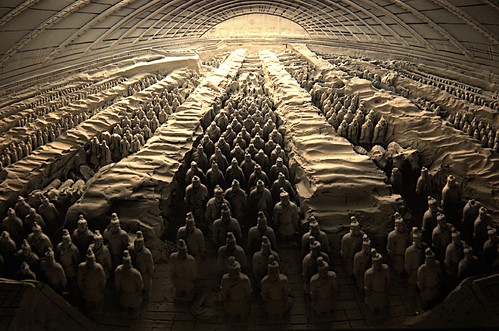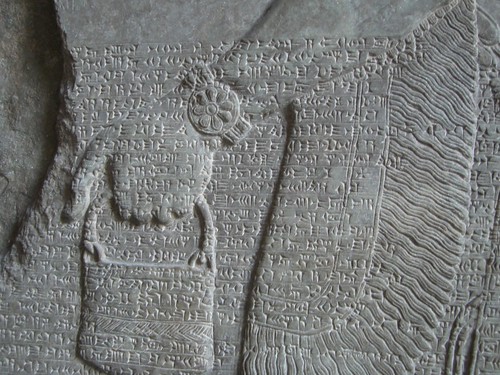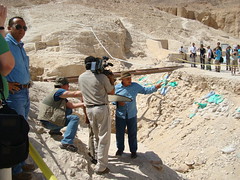I have been browsing of our ever-growing Flickr group focused on Ancient World sites, artefacts and adventurers exploring, and have been thinking about what the ancient world is all about (power tips for browsing Flickr here). It seems unnecessary to drop a definition on what the ancient world is–but we can certainly describe it.
My top ten ways for describing Ancient World sites and artefacts:
10. The Ancient World is Old
First of all the Ancient World is really old–from a long time ago. It is much, much older than any one now alive could possibly remember. Even generations older than an account heard from someone who had witnessed it first-hand. Probably it is older than most people can trace their family tree back to (although some people seem to be getting pretty good at this). So it is older than anything that is directly related to us or our family or the world in which we live in today.
So we must read about it or investigate the available source materials to understand things. We must follow the traces and the trails. Here is where the investigation, mystery and misinformation get into the mix. The Ancient World is often misunderstood, shrouded in incomplete facts or even the object of anecdotal guessing and folk tales. We need to work a bit to piece together all the science, the random factoids and develop our own ideas.
How many years ago? Our understanding of man, actually the first woman perhaps, goes back to the time of Mitochrondrial Eve about 175,000 years ago (see Alec MacAndrews interesting analysis). Then there was the last ice age which started 110,000 years ago, hit the max around 20,000 years ago and then ended 12,000 years ago. So we can perhaps start our study of the ancient world from inside the caves in which the first homo sapiens lived. Their amazing paintings tell stories of vast herds of powerful animals which either they hunted or were hunted by.
 |
 |
Of course things can be much more recent than prehistoric cave paintings and still be old enough to be ancient.
9. In Ruins
From scattered stones to delicate shards of pottery to the skeletons of entire cities, we can go to sites and touch the spots that were once new. The Romans seem to have left the most behind in this regard. The great Roman Empire, founded in 753BC (according to the legendary fight between the twin brothers raised on wolves milk) dominated Europe, the Mediterrean and points into Asia for more than 1,000 years leaving behind a visible and impressive legacy.
You can often get access to ruins and walk around while you try to imagine what people were doing in these places. Some ruins have been restored enough to be venues for modern day theatrical and sporting events. Seeing a greek tragedy at the Acropolis in Athens is a fantastic experience (check listings for the summer festival here).
Were their lives that different from ours–yes! Ruins are certainly romantic in our understanding now. Yet, they often served very specific purposes that may not be that appealing to us now. Don’t forget though, they were often painted and had vast decorations back in their day.
8. Monumental Scale = Big and Many
When an ancient world leader wanted to make a point–they went for it. The Great Pyramid in Egypt, rising to about 50 modern stories tall, was the tallest man-made construction in the world for thousands and thousands of years. Sites are also filled with almost countless number of things–sculptures, paintings some with intricate detailing. It must have been a staggering investment of resource and GDP to make these places. There were no movies or tv back then (no internet either) so one can only begin to imagine the impact these gigantic places had on the common people. Which also makes one think about just what message some of these sites were meant to deliver. Awesomeness and infinite power of the rulers and their unique rights seems to be high priorities. Rights for individuals? Well the Magna Carta wasn’t written until 1215AD.
7. Lost Cultures
Cultures seemed to have blended into one another more than our history books or a neat timeline would suggest. Sure the Romans re-purposed as much as they could from their predecessors and their conquered cultures. Over time popular beliefs and myths may get disconnected from their actual sources, and in so doing leave entire cultures in obscurity. For instance, many of the early kingdoms in and around mesopotamia have not maintained their identity even though they had their moment–some of which last hundreds of years. Our interest in cultures are often also stirred by popular movies or new discoveries. The Hittites or the Assyrians are not that widely appreciated, although the lands they covered are still very much in the news on a daily basis.
Or what about the Celts? Most people associate this culture with the modern Irish and British culture. But the Celts covered Europe at one point–founding Vienna in 15BC. The Romans called them Gauls. Some theories suggest that the Celts evolved from the people of the inhabited the Stonehenge area.
6. Abandoned Cities
For many reasons, entire cities have moved or simply been abandoned. Often we can guess about environmental changes that dramatically made the city too difficult to support–like water supply or a major natural disaster. In some cases we just don’t know why–plague? attack? poor planning to begin with? These outlines of daily life are fascinating and you can walk streets and view the remnants of the mundane as well as the regal. Wander places like Pompei, Ephesus, Machu Pichu or Angkor Wat and get a flavor of how these places were designed. How were people meant to live and work. What was the overall purpose of the construction. We are also finding many, many digital reconstructions of cities like Karnak as well as great buildings that will help us imagine how people lived and what choices they had to face in their lives.
5. Hidden Tombs
Death was a major part of daily life and awareness. Life was short and harsh. People with great power and control often started planning for their afterlife from their birth. Vast and amazing treasures were made as admission offerings to the next life and challenges that were expected.
It is no surprise then that these valuable tombs were well hidden. Maps were possibly destroyed and plans burned to reduce the chance that someone could uncover these structures and raid the contents. For centuries these tombs rested silently in the ground with few people ever knowing they existed. It is hard to believe that before 04 November 1922 only two men had a belief that KV62 held the treasures of King Tutankhamun. The discovery changed the world. It wasn’t until 1974 that local farmers dug up the first pieces of the vast Terracotta Warrior pits in Xi’an China and opened the door to the eternal army of the First Emperor of China.
4. Amazing Treasures
The 3 gold coffins and the gold death mask of King Tut are truly spectacular creations. We have been studying them quite closely as we have been making the King Tut Virtual Exhibition areas. The smaller pieces are also breath-taking. Many have been created with valuable stones and metals, usually crafted with expert finish and made to tell important stories. But these artefacts are just a few of the more than five thousands pieces catalogued by Howard Carter. Museums are filled with examples of finely made objects made with primitive, but effective tools of the day. Imagine the cost and effort to make such pieces today (take a look at Kate Moss in gold here).
3. Covered in Strange Languages
It sometimes looks like a type of programming code to open a portal to the afterlife. The written forms of ancient languages seem totally alien to us–without lines, without punctuation. They seem beyond deciphering on a quick glance, but clearly they have been translated yielding their magnificent words and stories. Sumerian cuneiform, egyptian hieroglyphs, aramaic all seem to add excitment to the encrypted legacy that we are curious to decode.
2. Undiscovered
Archaeology itself is a fairly recent undertaking and perhaps there is more to be discovered in the next fifty years than has been discovered to date? No one really knows what is beyond the next scrapping tool or fine brush sweep. Our entire understanding of huge chunks of history may in fact need to be re-assessed. Egypt is a major area for ongoing excavations and a regular flow of new discoveries. Yet, there are many active digs across the world right now.
We can also take a new look at existing information and re-discover things that we may only have taken a superficial look upon. We have the benefit of thousands of years to explore but at the same time there is a lot to learn about and the details can get confusing. So it can be that you can look at something many times and in fact only start to really see it once you have more understanding of the ancient world.
and finally the top best way to describe the Ancient World…
1. Worth Exploring
I think we gain a lot of perspective and often some context about our daily lives from considering the ancient world. Exploring is also fun and a way to meet people with a common interest. In addition to the sites and artefacts, there are also massive bodies of literature and drama that fill-in the picture of how these things were used. You can share your ideas or opinions about why these places were so important.
We can reflect upon how life is the same or in fact very different. Our explorations may take us to an unknown part of the world physically. We may wander from web link to web link to find some common themes across time and cultures. Some interesting common trends may appear to us. Why were there some many pyramids?
Exploration is also a physical activity. So many people have climbed the Mayan temples it seems. They gain the prize of seeing the jungle canopy spread out like an endless green sea of trees before them. Imagine how such a strong sensation would have impacted participants in a sacrificial ceremony.
We hope that Heritage Key will entice and support this type of exploration.







